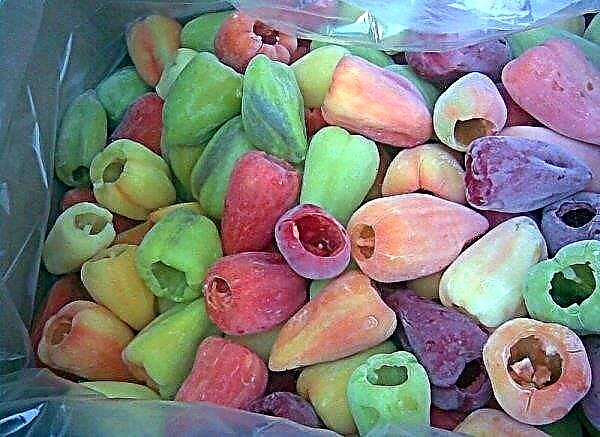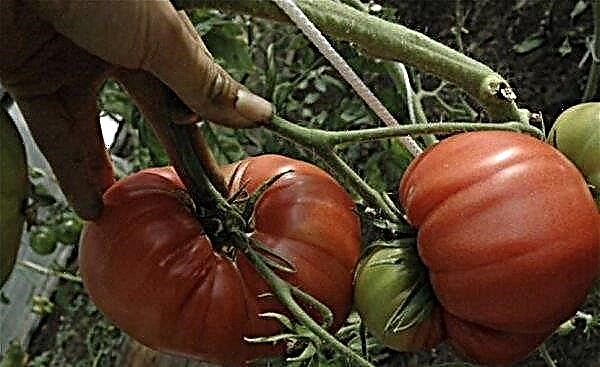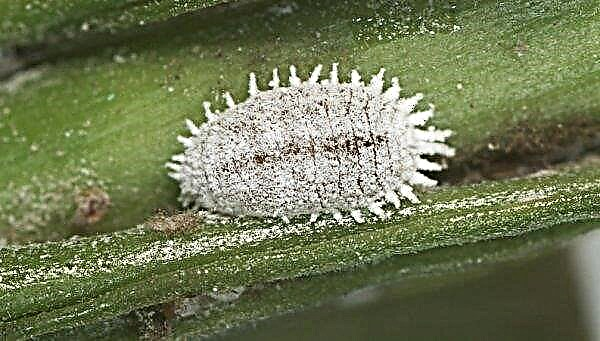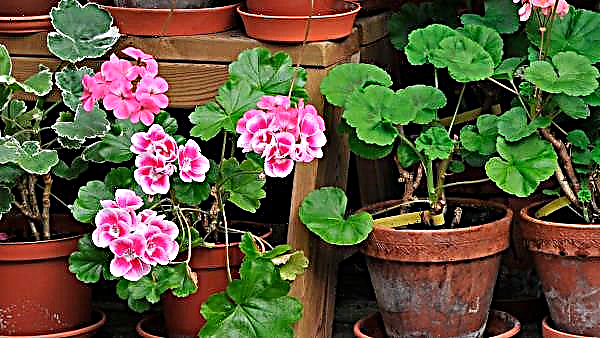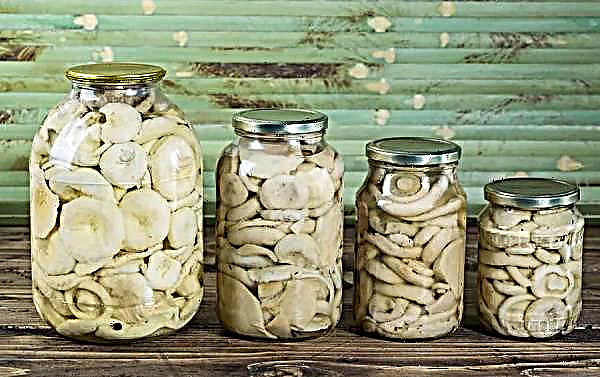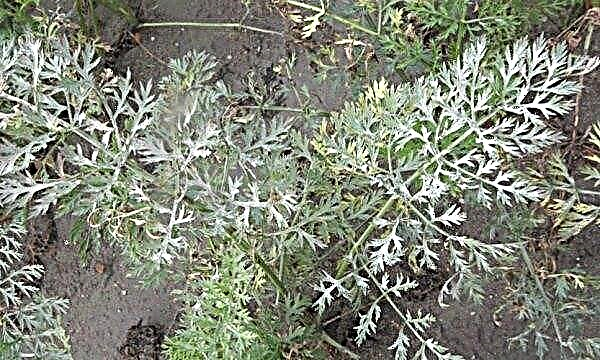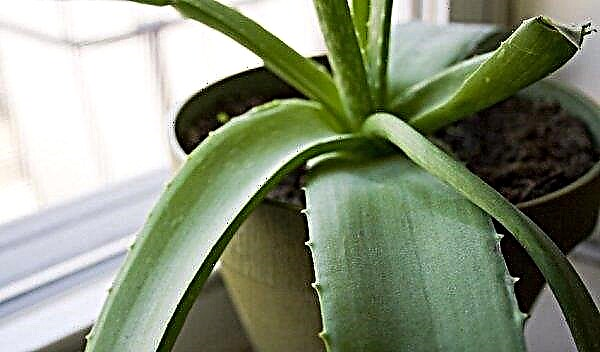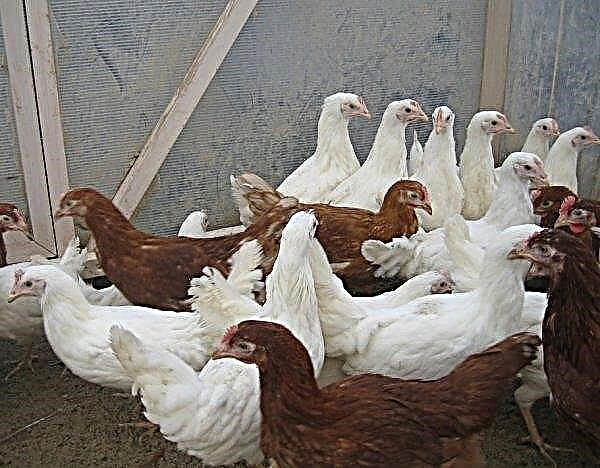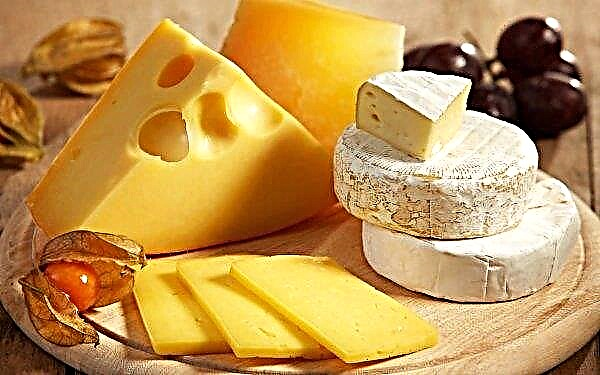Quails can be successfully grown in the household. But poultry farmers are scared by the problems of keeping these birds in the cold season. Indeed, in the wild, they do not live in harsh winters and do not tolerate temperature jumps, dampness, slush. Let's talk about how to create conditions for quail in winter so as not to lose the livestock.
Where to keep quails in the winter?
You must select a suitable room for wintering. Consider several accommodation options.
Barn
If your farm has several quail families, consider placing birds in the barn.
For this, any room is suitable. To calculate the area, keep in mind that experienced breeders recommend having 25–35 square meters per 1000 heads. There you can put cells in 5 floors and everything you need for wintering.
The room should be equipped with ventilation, better forced, but without drafts. Lighting can be either natural (windows) or artificial (incandescent or fluorescent), but not bright, otherwise the light can excite the bird. The temperature should be constant, therefore it is better to equip the shed with a heating system: electric, water, stove, depending on the technical capabilities and your preferences.Important! The barn is prepared in advance, for which the walls are plastered and covered with mortar, it is better to make a cement screed on the floor.
 In cold weather - quails need a special insulated room. If it is not possible to make heating, insulate the room with polystyrene foam, make the cages wooden and place them higher. Do not forget about the warm litter (straw, sawdust). With this set of tools, you can keep quails in the barn without heating, when there is no severe frost.
In cold weather - quails need a special insulated room. If it is not possible to make heating, insulate the room with polystyrene foam, make the cages wooden and place them higher. Do not forget about the warm litter (straw, sawdust). With this set of tools, you can keep quails in the barn without heating, when there is no severe frost.- The advantages of this quail content are:
- placing a large number of birds;
- the ability to provide a comfortable mode of detention.
- But there are also disadvantages:
- considerable material costs;
- It takes a long time to control the process.
Greenhouse
Some poultry farmers accommodate for wintering quail greenhouses, which are made of glass or polycarbonate. Make sure that there are no gaps, and the door is tightly closed.
In this case, the room is already ready, it remains to place the number of cells corresponding to the livestock, to prepare food. For the organization of heating use electricity. Each cell is heated by laying special heating wires for each structure, you can use the "warm floor" system.
For the organization of heating use electricity. Each cell is heated by laying special heating wires for each structure, you can use the "warm floor" system.
In winter, the greenhouse is covered with snow, so there is protection from the bright winter sun, but you should have at hand material that will cover the cells from light in the event that there is no snow. Keep in mind that the day is short in winter, so make additional lighting in the greenhouse.
- The advantages of such housing for quail:
- no need to build a barn;
- convenient daily care.
- But there are also disadvantages:
- dependence on weather conditions;
- in the case of placing a large number of livestock, a lot of electricity is used, which makes such a content unprofitable, and often unprofitable.
Video: Heating the greenhouse in winter
Balcony
If you are a city dweller, but want to feast on fresh quail eggs, you can use the balcony or loggia of your apartment for this, including in the cold season. So that the wintering of birds went without problems, you have to work hard.
Important! The balcony on which you will place the quails should go to the quiet side, the busy road is a constant source of noise, and therefore, stress for the birds.
The actions are as follows:
- Choose an available spot on the balcony.
- Make a fence in the form of a wooden frame, always with a door - you get a cabinet.
- Insulate the cabinet inside with 10 cm thick foam.
- Sheath the structure with plywood.
- Make a hole for the fan, the household fan, which is installed in the kitchen or in the bathroom, is suitable.
- Upstairs, install a matte bulb light.
- Connect the oil cooler.

It remains to place the cells in which there should be nipple drinkers and trays for collecting waste (preferably wooden with a polymer coating).
- Advantages of this breeding:
- the possibility of keeping in an apartment;
- there are always fresh eggs and dietary meat, moreover, without leaving home.
- The cons include:
- the need for feeding 2-3 times a day;
- daily litter cleaning;
- the presence of unpleasant odors that can penetrate the apartment.
What temperature can a quail withstand in winter?
In the wild, quail are thermophilic birds; they do not tolerate negative temperatures. Domestic individuals do not differ from wild relatives. Therefore, to keep these birds in the household, it should be possible to maintain a positive temperature at a minimum of +15 degrees. If the temperature is lower, they will survive, but you can forget about the eggs.
Therefore, to keep these birds in the household, it should be possible to maintain a positive temperature at a minimum of +15 degrees. If the temperature is lower, they will survive, but you can forget about the eggs.
Additional Content Requirements
Having considered the options for placing quails in the winter, we will move on to other requirements when breeding these birds.
Did you know? Japanese students are recommended to use quail eggs in the amount of 2 pieces before starting classes. This improves memory, vision, and the state of the nervous system, improves immunity.
Microclimatic conditions
Creating an acceptable microclimate for quail that will winter is important. If you do everything right, follow the requirements for temperature, humidity and lighting, then your wards will not even feel that there is frost outside the windows.
So, the requirements are as follows:
- Lighting. For egg production, the daylight for quail should be 17 hours, moreover, set a clear time for turning on and off the light. Note that the bird does not tolerate bright lighting, it must be muffled, then there will be no deviations in behavior.

- Humidity. Humidity levels are 60–70 percent. And if the indicator falls below 55 percent, then water consumption increases, and feed is eaten less. Moreover, if low humidity lasts for a long time, then the quail is poorly carried, and the feathers become brittle and stiff. You can solve the problem with the help of water tanks, which are installed at the bottom, or by hanging wet rags. It is better to install a hygrometer in the room, which will help to monitor this indicator. At humidity over 75 percent, bird health problems also arise.
- Temperature. Optimum readings are 20–22 degrees Celsius, although slight deviations in both directions by 2–3 degrees are possible. Most importantly, there should be no sharp jumps in temperature, draft or low temperatures. When the quail begins to freeze, they pile together, can climb onto each other, which leads to injuries and often death.
Cell arrangement
Now let's talk about the cages that contain birds. Cells can be purchased ready-made or made independently.
Must be:
- a frame made of wood or metal, which is sheathed with a galvanized metal mesh on the floor and front side, the remaining sides are deaf and made of plywood, chipboard, plastic and other materials;
- door;
- drinking bowl and feeder;
- a tray for garbage and natural waste, which is convenient to remove for cleaning;
- gutter where the eggs will roll.
 Do not place the cells directly on the floor, make legs so that the structure is at a height of 15 to 30 centimeters.
Do not place the cells directly on the floor, make legs so that the structure is at a height of 15 to 30 centimeters.
Note that the cells can be placed in several floors, which saves space. Only such a design should be reliable, well-bonded, with access for inspection and cleaning.
Video: Winter quail cage
Hygiene procedures
In winter, the need for cleaning is reduced. If you keep birds in a separate room, then you can clean it once a week. If you keep the quail at home on the balcony, you will have to clean it daily, otherwise you will suffer from unpleasant odors.
Every three months they disinfect the cells and the premises where they stand. Quails are temporarily transferred to another place and get down to business. The old litter is removed, everything is washed thoroughly with a soapy solution, and apple cider vinegar can also be added to the water. The treatment with parasite control preparations that will save birds from blood-sucking insects will not hurt. Now it remains to dry everything well, after which the tenants are returned to their permanent place.
Feeding quails in winter
Winter feeding rules are not much different from summer feeding. The basis of the diet is compound feed intended for chickens. As top dressing, oats, wheat, onions, millet are used. Since in winter there is a shortage of fresh herbs, it is necessary to give the quail grated apples, beets, carrots, turnips, cabbage, boiled potatoes, they are mixed with the main food. As a source of protein use fish or meat and bone meal. You can give cottage cheese, which is a source of protein. It is advised to add powdered milk (1 gram per day), crushed eggshells (3 grams per day) to the feed. It is recommended to give females vitamins A and E so that there are no problems with egg production.
As a source of protein use fish or meat and bone meal. You can give cottage cheese, which is a source of protein. It is advised to add powdered milk (1 gram per day), crushed eggshells (3 grams per day) to the feed. It is recommended to give females vitamins A and E so that there are no problems with egg production.
You need to feed according to the schedule 2-3 times a day. In winter, it’s important to leave food for the night to the birds; grain mixes that fit right into the feeder will do. Quail should have free access to water, they drink constantly.
Important! Drinking water should change 2–3 times a day and be clean. Birds cannot tolerate water that is stagnant or rotten.
Possible diseases and their prevention
Infectious diseases that quail is prone to:
- Newcastle disease;
- pullorosis;
- ornithosis;
- aspergillosis;
- smallpox.
 The parasitic diseases that occur in this poultry are as follows:
The parasitic diseases that occur in this poultry are as follows:- malophagosis;
- syngamosis;
- blindness;
- eye injuries.
Non-communicable diseases characteristic of quailing:
- hypovitaminosis;
- "Twine" in the chicks.
 Such diseases affect birds in case of non-compliance with the rules of nutrition and watering. Therefore, prevention consists in strict adherence to the diet, which is necessary for the development of birds.
Such diseases affect birds in case of non-compliance with the rules of nutrition and watering. Therefore, prevention consists in strict adherence to the diet, which is necessary for the development of birds.
Useful tips for beginners
In conclusion - tips for those who are just starting to breed these birds:
- Decide what you will do this for. The number of individuals depends on this. If you want to have eggs and meat only for yourself, then 20 pieces are enough. If you contain more, there will be surplus products that will need to be sold. With a large flock of material and physical costs increase, calculate your strength correctly.
- Think about where you will keep them. The place must be selected depending on the number of individuals, and also decide how you will comply with the requirements for temperature, humidity and the amount of light.
- Solve the issue with the cells. You can make them yourself or buy ready-made ones.
- Make a financial calculation in advance. Calculate how much money is needed at the initial stage, then to purchase feed and maintain normal conditions, and you will understand whether it will be profitable to do this business.
- Keep in mind that quail needs daily care. The need for feeding, cleaning, and egg assembly requires a lot of time. Therefore, if large-scale plans are planned, a person is needed who will do this.

Did you know? Quail eggs do not cause allergies. They contain an ovomukoid protein, which suppresses allergic manifestations. A similar protein is used in the manufacture of antihistamines.
Winter quail breeding is not such a difficult job. Of course, some poultry farmers do not bother and raise these birds only in the warm season, and then let them under the knife. But taking into account the fact that you now know how quails calmly endure the winter when certain conditions are created for them, you can do this fascinating business all year round. So, think, weigh the pros and cons. And we wish you success in this field!



